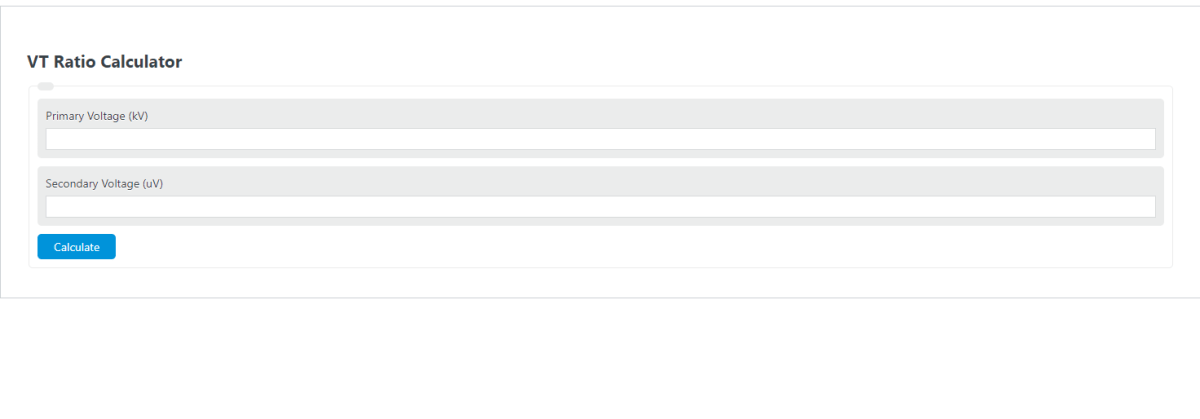Enter the primary and secondary voltages of the transformer into the calculator to determine the VT ratio.
- Transformer Loss Calculator
- Transformer Amperage Calculator
- Transformer Impedance Calculator
- Transformer Calculator
- CT Ratio Calculator
- Transformer Efficiency Calculator
VT Ratio Formula
The following equation is used to calculate the VT Ratio.
VT = PV / SV
- Where VT is the voltage transformer ratio
- PV is the primary voltage (kilo-volts, kV)
- SV is the secondary voltage (micro-volts, μV)
To calculate the voltage transformer ratio (VT), divide the primary voltage by the secondary voltage.
What is a VT Ratio?
Definition:
The VT Ratio (or Voltage Transform Ratio) measures a transformer’s performance. It is one of the most widely used methods to determine how much power a specific transformer can handle in the electrical industry.
The VT Ratio tells you how much voltage is lost when electricity travels through the transformer.
It is expressed in kilovolts per microvolt, or kV/μV. The higher this number, the better the performance of the transformer. The kV/μV value is generally between 0.6 and 1.0 for good transformers, and most equipment and facilities require a kV/μV of .8 or higher for safety purposes
Transformers are widely used to change voltage levels in many industrial applications. It is essential that a transformer can handle the power it is given: it should not be overloaded. The Voltage Transform Ratio (or VT ratio) allows a transformer’s performance to be measured.
